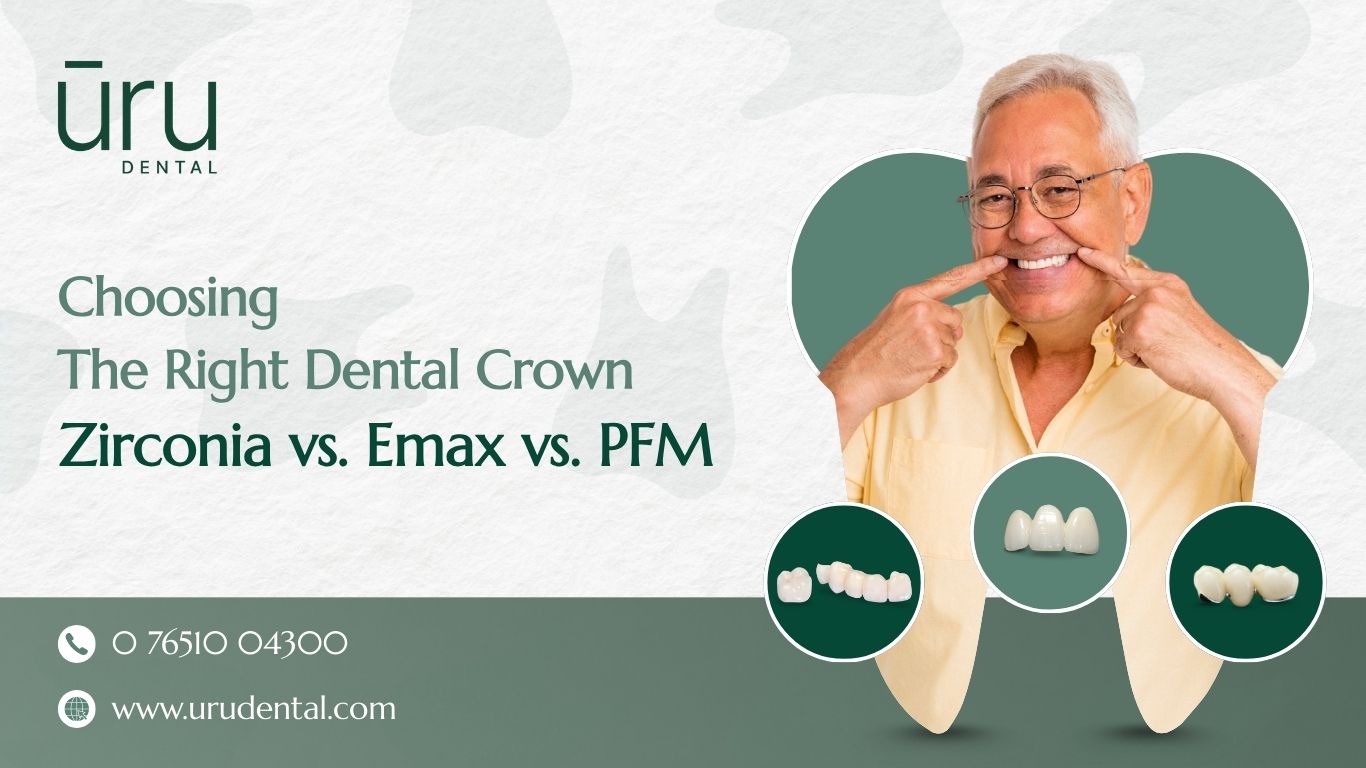
When it comes to restoring your smile with a dental crown, the options can feel a bit overwhelming. Zirconia, Emax, PFM—these aren’t just fancy dental terms; they’re materials that differ in strength, appearance, cost, and durability. So how do you choose what’s best for your tooth?
Let’s break it down and help you make an informed decision with a dentist's guidance.
What Is a Dental Crown, and Why Do You Need One?
A dental crown is essentially a cap that’s placed over a damaged or weak tooth to restore its shape, strength, and appearance. Dentists often recommend crowns after a root canal, for cracked teeth, large fillings, or cosmetic makeovers.
But not all crowns are created equal. The material your crown is made from can affect how long it lasts, how it looks, and even how it feels in your mouth.
Zirconia Crowns: Strength Meets Aesthetics
Zirconia is a type of ceramic known for its extreme durability and biocompatibility. It’s often used for back teeth where chewing pressure is highest. Zirconia crowns are metal-free, tooth-colored, and can be matched quite well to your natural shade.
Pros:
- Very strong and long-lasting
- Less tooth reduction needed
- Suitable for people with metal allergies
- Fracture-resistant, even under high pressure
Cons:
- Slightly opaque compared to natural enamel
- Not always the first choice for highly visible front teeth
If you’re looking for a balance of durability and appearance—especially for molars—zirconia is a solid choice.
Emax Crowns: The Aesthetic Champion
Emax crowns are made from lithium disilicate glass-ceramic, known for its superior aesthetics. They’re most commonly used for front teeth where looks matter most.
Pros:
- Translucent and natural-looking
- Ideal for visible areas
- Can be bonded directly to the tooth, preserving more structure
Cons:
- Less durable than zirconia—best for low-stress areas
- May not be ideal for people who grind their teeth
If your main concern is how your crown will look—especially for front teeth—Emax is often the go-to.
PFM Crowns: The Traditional Workhorse
Porcelain-fused-to-metal (PFM) crowns have been around for decades. These crowns have a metal base for strength, topped with tooth-colored porcelain for aesthetics.
Pros:
- Strong, time-tested option
- Less expensive than all-ceramic options
- Good balance of strength and looks
Cons:
- Over time, the metal base can show as a dark line at the gumline
- Not as natural-looking as Emax
- Risk of porcelain chipping or wear on opposing teeth
PFM crowns are still a reliable option, especially when budget is a concern. They work well in both front and back teeth, but they may not offer the most natural appearance.
So, Which One Should You Choose?
The answer depends on a few things:
- Tooth location: Back teeth need stronger materials like zirconia or PFM, while front teeth benefit from the aesthetics of Emax.
- Your bite: If you tend to grind or clench your teeth, durability is key.
- Budget: Emax and zirconia are generally more expensive than PFM.
Aesthetic goals:If you want your crown to look exactly like a natural tooth, Emax often wins.
Dental crowns are a long-term investment in your oral health and smile. Choosing between Zirconia, Emax, and PFM doesn’t have to be confusing. Talk openly with your dentist about your needs, lifestyle, and preferences. With the right choice, your crown can last for years—maybe even decades—without giving you trouble.